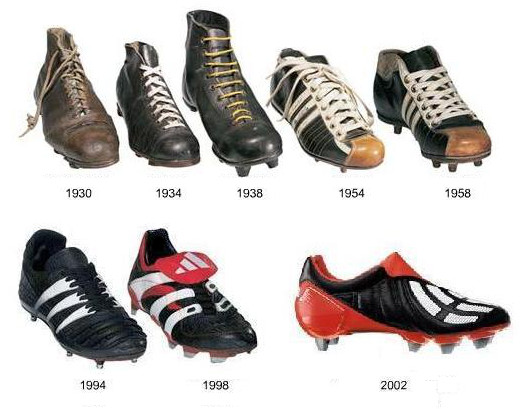Choosing Appropriate Footwear
Footwear selection in Football

Lower limb injuries are common place in football with considerable cost on performance, finances and on the individual.
Shoe-surface interaction during football can have a considerable impact on the risk of injury and high levels can almost double the risk of injury.
Put simply, the shoe-surface interaction is the amount of friction and force generated between the football boot and the playing surface (e.g grass). This is especially relevant while the player is making rotation movements.
When the amount of forces in the shoe-surface interaction is high during rotation movements, there is high amount of force by the player’s knee and ankle which may lead to injuries such as an ankle sprain or an ACL tear.
There are various factors that determine the amount of shoe-surface interaction:
- Grass variety
- Soil type and moisture
- Grassroot growth
- Boot stud type, length, position and material
Multiple studies have shown that by paying attention to these factors and reducing the amount of shoe-surface interaction, the risk of injury can be halved.
However, a lower shoe-surface interaction would also mean lower traction levels which could affect a player’s performance so these factors have to be weighed carefully so as to reach an optimum level.
Choosing appropriate footwear for football
There are many different types of football boot available commercially with varying mixtures of
- Outer material
- Dimensions
- Materials
- Studs/blades
Choice of the boot depends on:
- Playing position
- Role in the team
- Type of surface that you play on
- Comfort of the boot
- Budget
In general, shorter and rounder stud types have lower traction levels which would help reduce injury risk. On the other hand, longer and more blade-like studs have higher traction levels which can help improve performance levels.
In the selection of football boots, it is advised that players should select boots based on
- The subjective level of comfort level of the boots to the players
- Their playing position and the frequency of rotation movements they will make (e.g central midfielder vs wingback – CM makes more pivoting motions in a game)
- Level of competition and expectations towards injury risk
- Type of playing surface. The harder the playing surface, the shorter and the rounder the studs have to be.
Footwear and Foot Orthoses in Golf
Foot injuries are common in golf, particularly in individuals who hit more than 200 balls per week on the range (Gosheger, 2003).
Golf is one of the most challenging biomechanical sporting motions to execute requiring:
- Good stance, posture and grip
- Swinging from the lower limb to generate power
- Weight transfer from back to front foot during the swing to generate club head velocity
The swing requires fluidity of movement in the ankle, knee, hip, spine, shoulder, elbow and wrist. Much of the swing power comes from the lower limb. This requires optimum weight transfer from the back to the front foot during the downswing which in turn produces greater club head velocity. However, this results in changes in ground reaction forces on the back and front foot.
The ground reaction forces (GRF) tend to be higher in professional golfers with faster club head speeds and hitting power. Also the torque (tendency of the force to rotate an object) is almost doubled on the front compared back foot (Worsfold et al., 2008).
Choosing appropriate footwear for golf
Appropriate footwear in golf help with traction and stability during stance and efficient generation of GRF during the swing. However, excessive GRF may cause foot pain or injury and this can be further worsened by the need to walk for 3-4 hrs continuously during a round.
Golf shoes usually have spikes on the soles and while there might be symmetrical spikes on both shoes, it is worth noting that there needs to be increased outer shoe traction at the top of backswing on the back swing to perform long distance shots with a driver (Dillman & Lange, 1994).
Golf shoes should also be well-fitted and comfortable for wearing for long hours particularly with the swing and walking. If there is discomfort or pain while walking or during the swing and if other areas in the chain of movement have been addressed, orthoses might be helpful.
Orthoses can help:
- Change load in muscles
- Modulate pressure on the bottom of the foot
- Increase comfort levels
- Manage and prevent injuries in the lower limb
- Improve the posture of the back foot, and also improve lower limb pain levels (McRitchie & Curran, 2007)
In turn there is evidence to suggest improved club head velocity by up to 7% after use of 6 weeks use of orthoses and reduced the effects of fatigue (Stude & Gullickson, 2000).